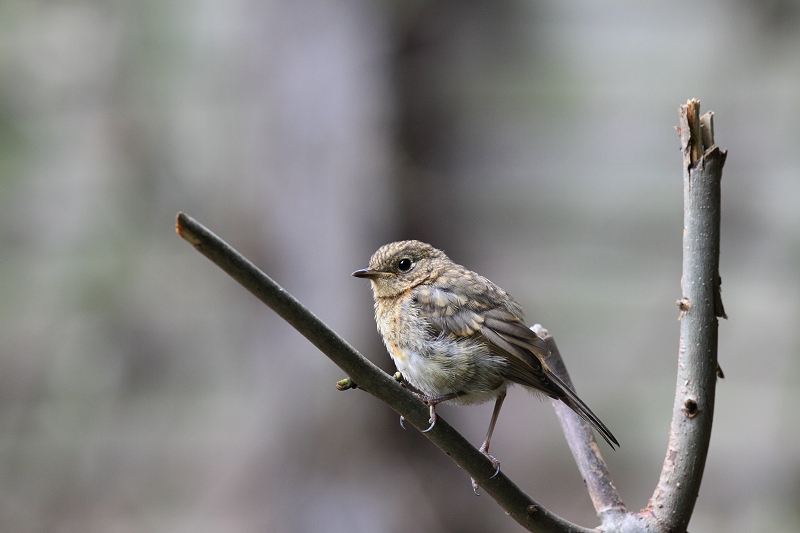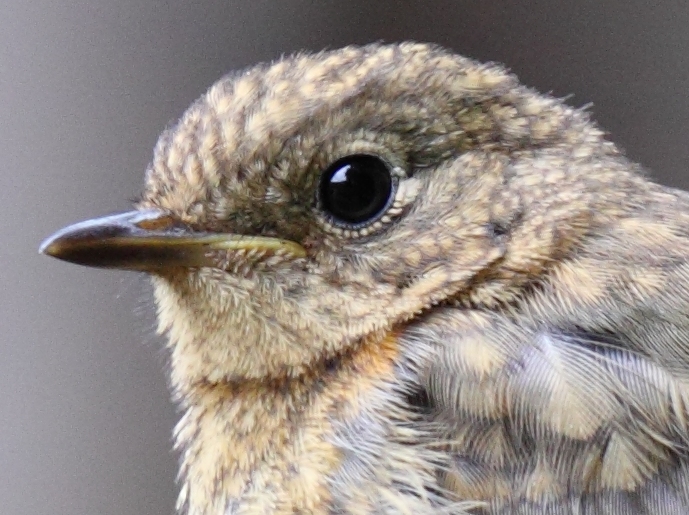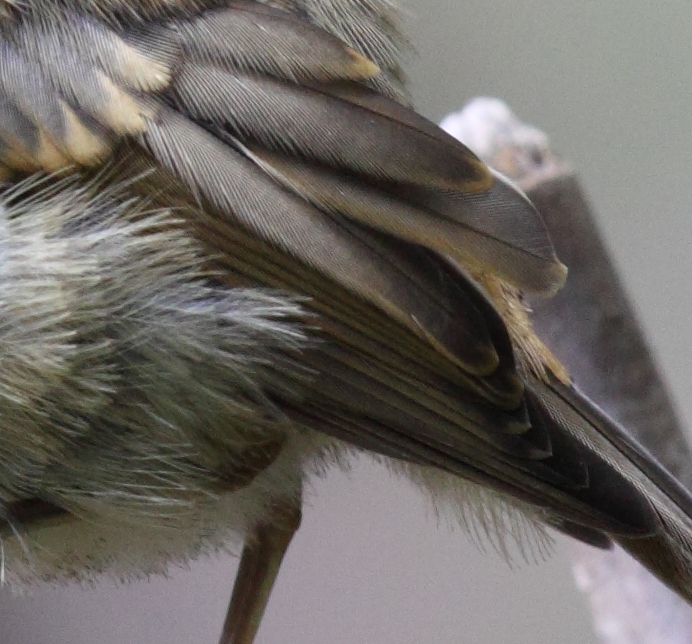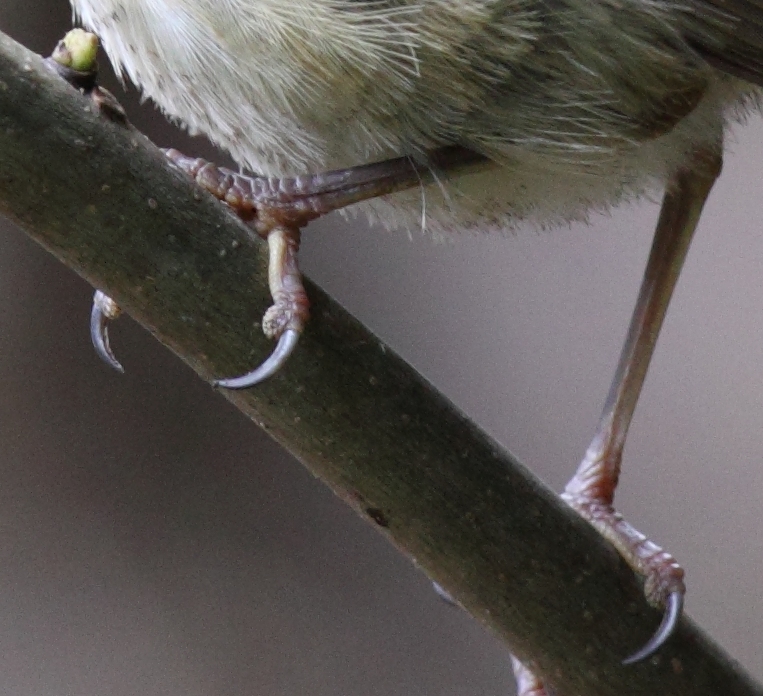It's not difficult to achieve results like this from the 50D, in fact I could find many better examples taken under more favourable light, I just hope people aren't unduly influenced by some of the comments here now - if you're not getting a good percentage of usable 1:1 shots from your 50D, the fault doen't lie with Canon, it's in your technique or the gear you're using.

When I see a blotchy blue sky at 400 ISO, when exposing correctly, then it figures that my subject is similarly affected by the blotchiness, even if it is not so readily visible. That means that fine detail is being obscured by the blotchiness. Now, when you go a good way towards filling your frame, as you have done in your example above, the noise is not that bad relative to the size of the details captured. But, if your subject is genuinely small in the frame then the details will be lost to the noise - even at 400 ISO. Yes, you can run NR and get a perfectly decent looking sky, but the bird will not be worth keeping.
The fault with my technique in this situation would be my failure to fill the frame sufficiently in the first place. But I'm not talking about
my technique. I'm talking about people in general relying on cameras like the 50D and 7D to allow massive cropping because
they did not fill the frame enough. All I am saying is that massive cropping at higher ISOs is not going to yield stellar results. Yes, 400 ISO from a 50D viewed at 50% with a light dusting of NR should look good, but so would the output from a 1D3 at 400 ISO at 100%, giving the 1D3 more reach than the 50D in that situation.
By the way, you say you have used no NR in processing that image but the last time we discussed your non-use of NR it turned out that you were using NR all the time because DPP applies NR automatically unless you purposely disable it. So, not that it matters much, other than for accuracy, but I'd like to know whether your images really are being processed with no NR whatsoever, because to my eyes everything you post looks amazingly smooth for images without NR and I would love to know how you do it.
Here's an example from my 50D at 800 ISO, processed through Lightroom on default settings. The only edit was a WB tweak. Exposure, sharpening, NR and so on were unaltered....
Full frame :
100% crop :
I wonder why my background does not look as clean as yours.

Perhaps the flaw in my technique is that I use Lightroom instead of DPP. I've already seen comments that Lightroom 3 is doing a better job with 50D files than Lightroom 2.x.
Let's see how things look in DPP, firstly with NR sliders both set to zero :
and now with the NR set to default values (2,3) as chosen by DPP :
My background still doesn't seem as clean as yours, and with NR included the bird is looking quite soft, definitely lacking fine feather detail, so I guess my technique is pants. I'd be grateful for any pointers on how to match the noise levels you manage to achieve. I don't expect to match the sharpness of your 500/4 prime with my 100-400 but it would be great to see the low noise that you are achieving. How do you do it?
At 1600 ISO and with the subject a decent size in the frame, the full frame image is just about OK, when compressed down to an iddy biddy 800x533 file, but at 100% it is horrific and I really can't see that 15MP was any advantage at all because we did not capture more detail, simply more noise, perhaps contributing to the impression of "false" detail when downsized. Example, again with no edits....
Full frame :
100% crop :
Sure you can apply plenty of NR and get a smooth looking image, but (a) there is no detail in the bird even at 100%; (b) by the time you've applied NR and downscaled there will be even less. So how did having 15MP add any value in this shooting example? IMO all it did was to generate a huge file that needed to be downsized significantly in order to appear OK. Now this kind of thing is easier to do when shooting large, relatively featureless subjects, like motorsports, but not much help for bird feathers unless you can pretty much fill the frame in the first place.










